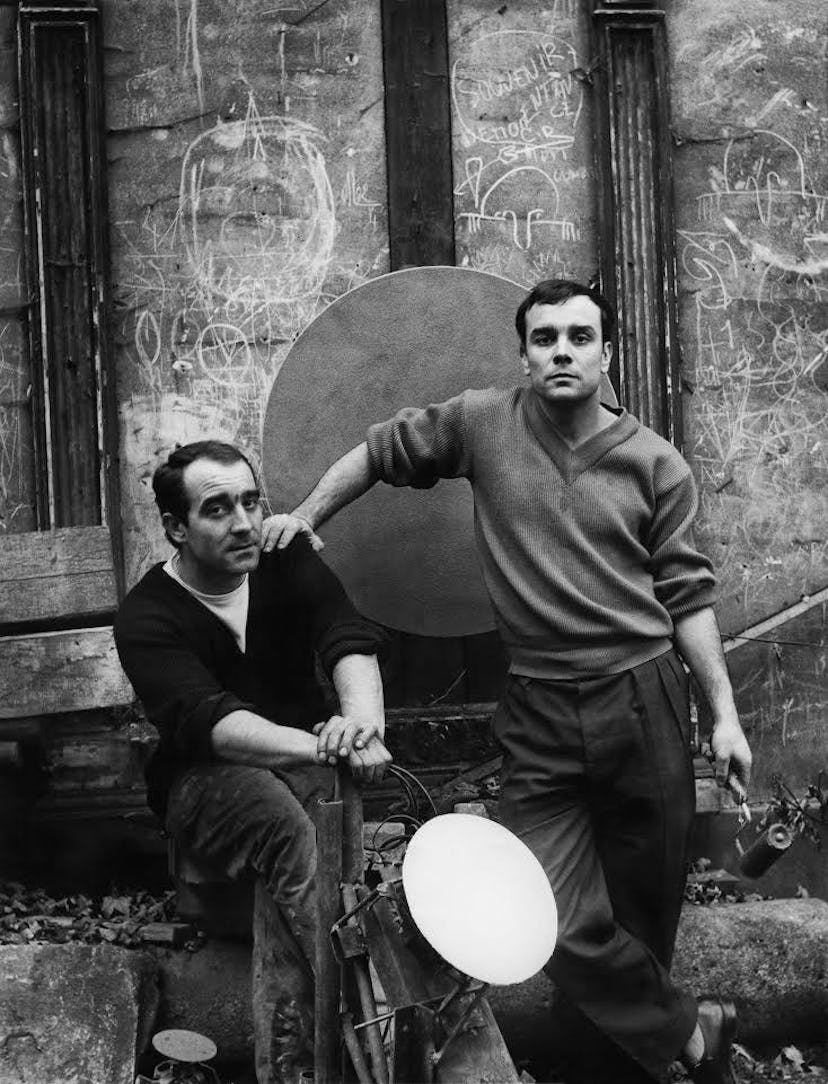The Story of the Parisian Alleyway Where Marcel Duchamp Mingled with Yves Klein and Max Ernst
A new exhibition at Paul Kasmin Gallery takes a look back at how a nondescript passageway in Paris — and infamous assassination site — became a breeding ground for some of the 20th century’s most influential artists.

Around 1916, Marcel Duchamp and Man Ray started making frequent visits to an alleyway in Montparnasse — the site of the murder of a recent French president, Félix Faure, who was killed while paying a visit to his lover who lived on the street. It wasn’t the drama that dominated the French tabloids, though, that drew the artists. They were simply visiting their friend, the Romanian sculptor Constantin Brancusi, who’d chosen Impasse Ronsin as the new home for his studio.
From there, other Dada and Surrealist artists quickly followed suit, and over the next few decades Brancusi was joined by the likes of Yves Klein, Max Ernst, William N. Copley, Les Lalanne, and Jean Tinguely in the space, turning it into a hub of camaraderie and collaboration (despite the fact that there was only one bathroom).
In the evenings, guests like Emile Zola and Henri Matisse came around for the constant parties, but the daytime saw visitors looking to buy a Brancusi, or simply those who came around to catch a glimpse of the master. In the latter camp were the parents of the New York gallerist Paul Kasmin, who represents Brancusi’s estate; he only realized the influence of the Impasse on a trip to Paris seven years ago, long after it’d closed in the 60’s. After his discovery, though, it seemed to keep cropping up, and he decided to revive the area that’s now part of a massive hospital complex to its glory days in one of his New York galleries.
Step Inside Impasse Ronsin, Marcel Duchamp and Yves Klein’s Favorite French Alleyway
Sheet-metal mail boxes at the Impasse made by Brancusi.
Niki de Saint Phalle shooting one of her assemblages.
Duchamp, Brancusi, and Tristan Tzara in the studio, 1921.
Studio of Natalia Dumitescro, 1949.
Brancusi and his dog, Polaire, photographed by Man Ray.
The entrance to Brancusi’s studio.
Max Ernst in the Impasse, 1954.
Rotraut and Yves Klein in the studio, 1962.
Brancusi sawing a block of limestone for the chimney, 1932.
Brancusi’s studio, 1955.
Claude Lalanne and Jean Tinguely.
Natalia Dumitresco in her studio, 1956.
William N. Copley, ca. 1951.
“Princess X” by Brancusi, 1916.
Jean Tinguely and Yves Klein in the courtyard of the Impasse with their collaborative works Excavatrice de l’espace” and “La Vitesse total,” 1958.
Francois-Xavier Lalanne and his daughter Dorothee at the Impasse.
Jean Tinguely and Niki de Saint Phalle at the Impasse, 1961.
“Impasse Ronsin,” which opens today and is up until January 14, isn’t an architectural recreation, but it does revive the space’s conviviality: It features works the artists made in the Impasse, many of them collaborations, and unseen for decades. Among them is a painting Ernst made in his studio, which hasn’t been seen since 1952; an assemblage by Niki de Saint Phalle, the splatters of paint having been applied in the alleyway by shotgun; a collection of Duchamp’s “rotoreliefs” and the film they appear in, Anemic Cinema; a bright blue sponge by Klein atop a stone from his parents’ backyard; and a bronze edition of one of Brancusi’s seminal works, “Princess X,” made in the Impasse the year he moved in.
“It’s quite a range of artworks and people with obviously very different thought processes and ambitions,” Kasmin said. “But through geographic closeness, you can see how accidents and ideas filtered from one to the other,” he added, pointing to collaborative works like a kinetic sculpture that Larry Rivers made with Jean Tinguely. The best example, though, comes at the end of the show: a facsimile of Brancusi’s studio, which is actually a facsimile of a facsimile, thanks to contributions from New York’s Noguchi Museum. Its 189 objects come from Brancusi’s only studio assistant, Isamu Noguchi, who recreated the space when he moved out of the Impasse in 1927, as a final nod to the artist’s influence.